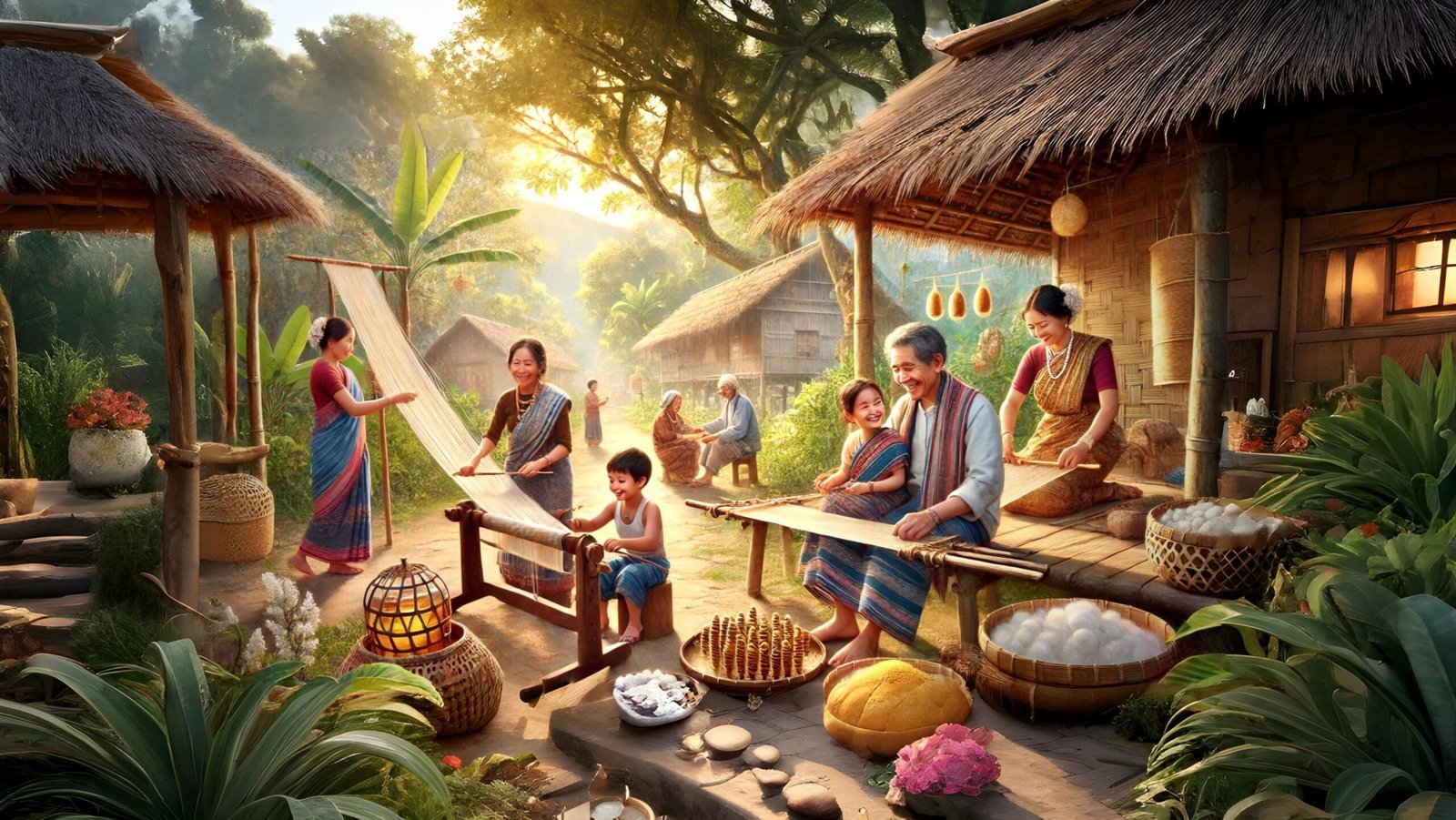
Blogs
“The Allure of Karbi’s Timeless Attire and Enchanting Jewellery”
Who are Karbi's ?
The Karbis,are the predominant tribal ethnic group in the Karbi Anglong district of Assam, have a rich ...
“Exploring the Exquisite Traditional Attire of the Bodo Community”
The Bodo community, with its rich cultural heritage, boasts traditional costumes and ornaments that not only serve as a form ...
Traditional Elegance of Naga Clothing: A Tapestry of Identity and Culture\”
Who are Naga's ?
Nagas are the various ethnic groups native to northeastern India and northwestern Myanmar. The groups have ...
“Dazzling Dimasa Jewellery and Ornaments: A Glimpse into Tradition”
The Dimasa community, known for their vibrant culture and traditions, showcases their unique identity through exquisite jewel...
Adorned in Heritage: Exploring the Traditional Attire of the Mishing Tribe in Assam.
In the heart of Assam, where the Brahmaputra River winds its way through lush landscapes, a hidden gem awaits discovery. The ...
Traditional Dresses of Dimasa Tribe in Dimahasao, Assam: Rich Heritage of Rigu, Rikhaosa, Risa and Rajamphain.
Introduction
The Dimasa tribe of Dimahasao, Assam, boasts a vibrant culture, and their traditional dresses are a reflectio...

